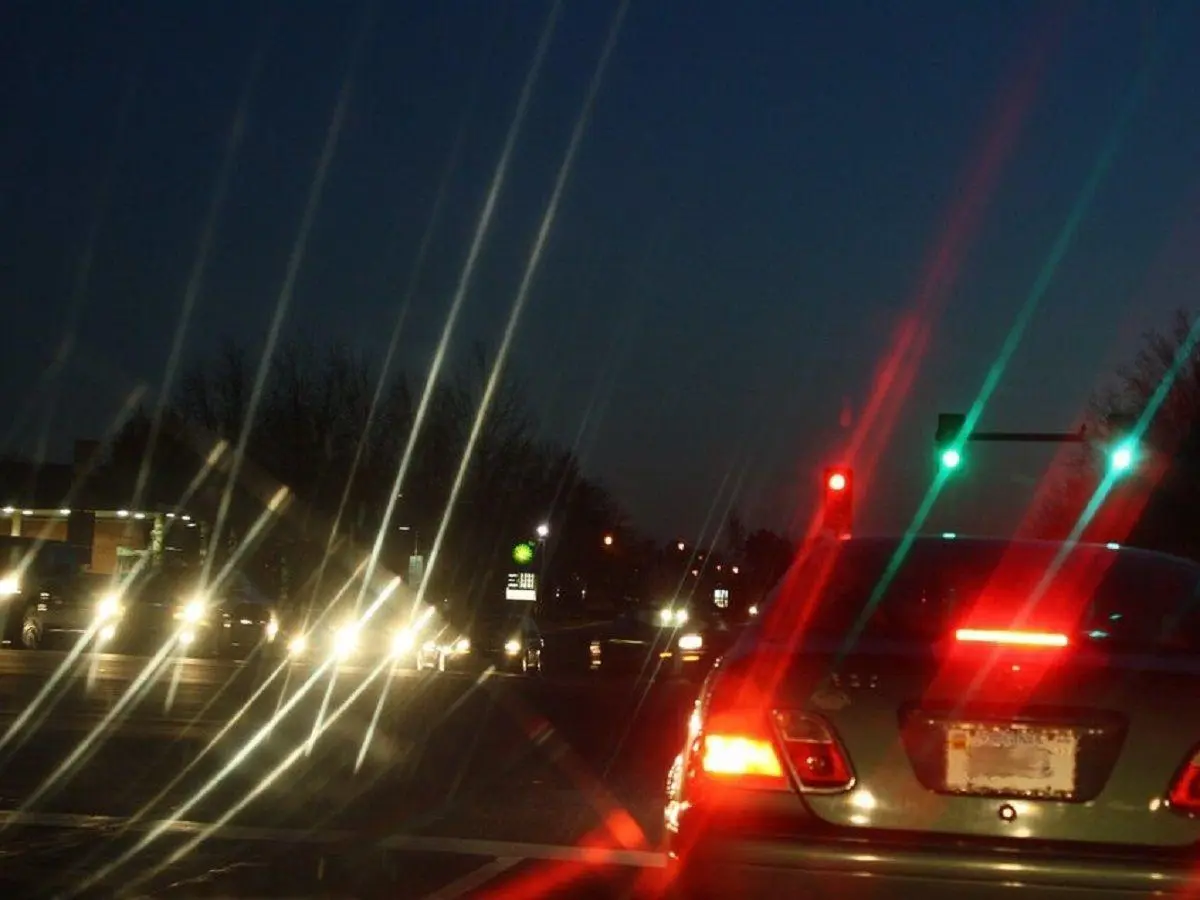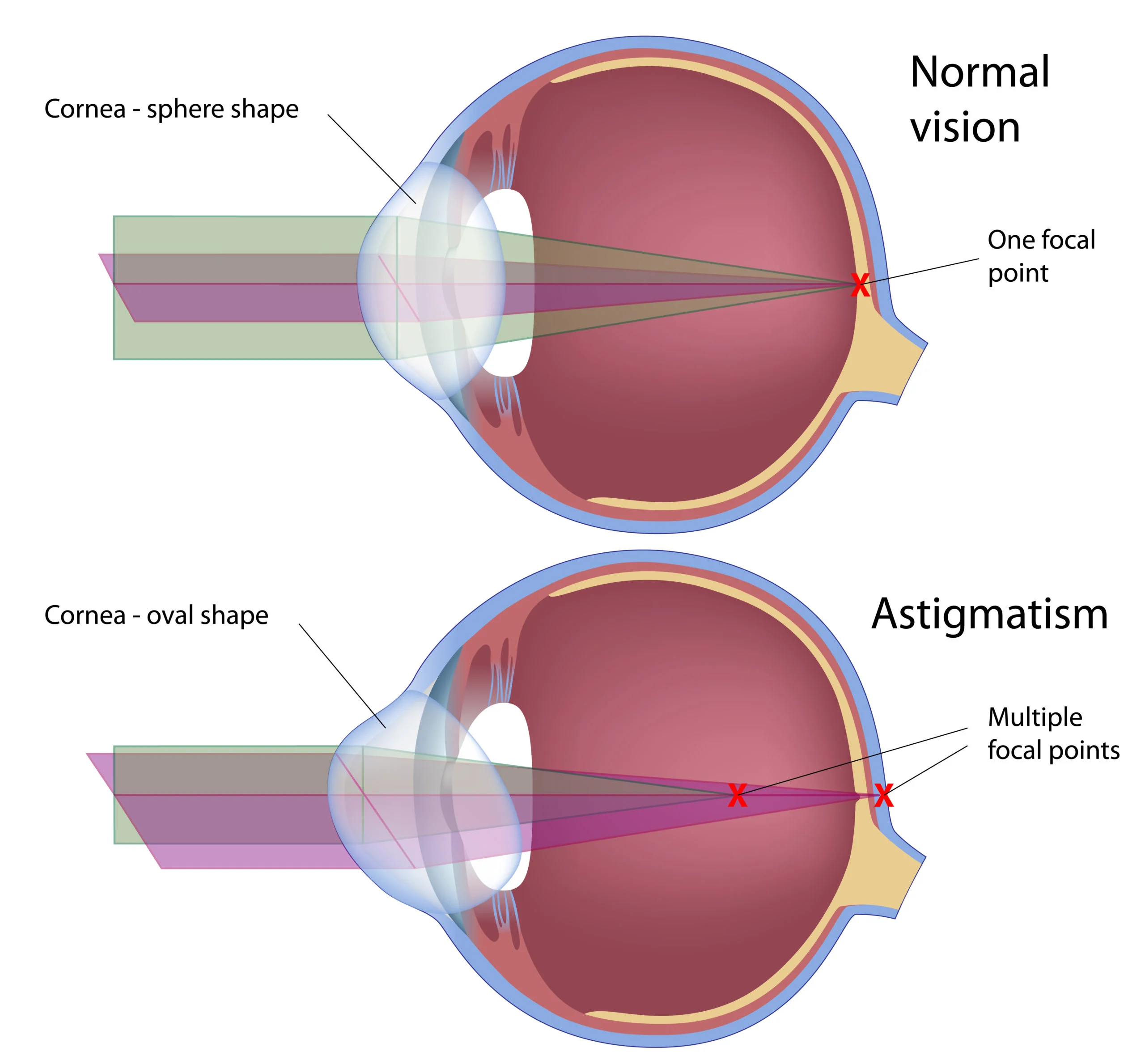Do you also have astigmatism? Have you ever thought about why light beams appear to emanate from virtually every lightbulb you encounter? You most certainly belong to the group of people who have a particularly specific illness. About one-third of Americans experience symptoms such as the need to squint in order to see clearly, headaches, difficulty seeing at night, and hazy vision, whether it is early in the morning or late at night.
Your pupil enlarges to let in more light at night and in other low-light conditions. More perimetric light then enters your eye as a result. This makes lights appear fuzzier and generates greater blurring and glare.

What Is Astigmatism?
The American Optometric Association claims that it happens when the cornea has an uneven shape. Your cornea protects your eye, and because of its deformed shape, light focuses improperly on the retina, resulting in headaches and blurred vision. When light is concentrated more on one meridian or axis than the other, astigmatism vision issues develop.
The light would therefore bend evenly in all directions if it beamed down on a sphere. However, a non-spherical cornea causes the light to bend in different directions, which can lead to blurry vision. But although it distorts vision, it is not unusual.

The National Eye Institute estimates that more than 150 million Americans struggle to see well due to refractive errors. About 13% of those refractive defects are astigmatism, according to the National Library of Medicine.
While a normal eye is perfectly round, astigmatic individuals have eyes that are egg- or oval-shaped, resembling an American football. It is a common disorder; some people are born with it, while others acquire it as a result of an eye injury, illness, or surgery.
The two basic kinds of astigmatism are lenticular and corneal. Your cornea will be more oval-shaped than round if you have corneal astigmatism. When you have lenticular astigmatism, your lens is crooked.
Reactions Of People After Reading About Astigmatism
“I always thought this was normal,” one person wrote. “Like when it rains at night I would look at the street lights and they would look like big red and green stars stretching further because of the rain drops on the windshield. Then I found out I have astigmatism, crazy to think not everyone sees the glare.”

Treating Astigmatism
According to the National Eye Institute, if you have astigmatism, you may notice symptoms such as:
- Blurry vision
- Squinting your eyes to see
- Having trouble seeing at night
- Straining your eyes
- Headaches
Some individuals with moderate astigmatism, however, might not even experience any symptoms. Therefore, scheduling a visit for an eye check with your doctor might help ascertain whether you have the eye problem. And if you find out that you have astigmatism, there’s nothing to worry about. As per the National Eye Institute, for people with extreme astigmatism, treatments include:
- Glasses
- Contact lenses
- Surgery
Going to the optician for an eye exam can determine for sure whether you have astigmatism. Tests may involve reading from an eye chart or using a gadget called a “phoropter,” where you must relay which letters you can see better. A keratometer, which measures the curvature of your cornea, and an autorefractor, which shines a light into your eye, are further tests that can be performed. You generally won’t need treatment if it is slight, though.
Your doctor will advise you to use those when driving at night if you currently wear glasses or contact lenses to address your problem. If you find it harder to see properly at night, it’s also conceivable that your prescription needs to be slightly modified.









